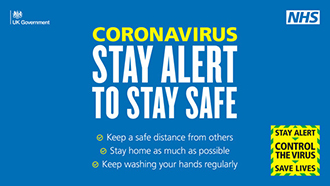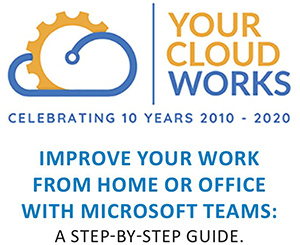As employers prepare to begin the ‘new normal’, human resources specialist Helen Smith, managing director of Crescita HR-OD, assesses the issues facing businesses in a very different way of working.
Sponsored article
THE LAST few months have been unprecedented in employment terms. The impact of Covid-19 has seen numerous workers furloughed under the government’s job retention scheme; thousands of job losses; many sectors struggling to cope with the effect of the prolonged period of lockdown and new ways of working, including working from home and meetings via virtual platforms becoming the ‘New Normal’.
It has been suggested that these measures will continue until such time as there is a vaccine for Covid-19 and, while progress has been made, it could still be some time before a vaccine can be widely administered.
The constantly shifting position means that it remains difficult to provide advice and guidance in an article such as this, because the chances are that the position will change before it makes it to publication. I can, though, update on key areas of concern for employers.

Working environment
THE government has announced that employees working from home can start to return to the workplace from August 1, providing that employers are able to ensure a safe working environment.
There is currently no intention to make the wearing of face coverings or masks mandatory in work environments but employees should feel free to choose to wear masks in the workplace if it makes them feel more safe and secure.
Social distancing measures must be adhered to within workplaces and will be the norm for the foreseeable future. Where workstations cannot be set between one and two metres apart, other measures must ensure that workers remain safe. These include but may not be restricted to:
- Staff work back to back or side by side rather than facing each other;
- Staggering the start and finish times of different staff groups so that fewer people are in the workplace at any given time;
- Establishing ‘bubbles’ or ‘groups’ where smaller numbers of staff are rostered to work together on an ongoing basis to minimise their interaction with others.
Employers should also make arrangements for the workplace to be routinely deep-cleaned to ensure that it is a safe working environment.
Job Retention Scheme
THE job retention scheme enabled employers to furlough staff and to reclaim 80 per cent of their monthly salary capped at £2,500 from the government during the lockdown period. Employers could top up the individual’s salary to their usual amount but they were under no obligation to do so. During the first period of furlough, employees could not undertake any work for the employer who had furloughed them although they could work for another employer or do voluntary work.
Employers were advised that HM Revenue & Customs would investigate any claims that were submitted to them to furlough staff and we have seen the first potential case against an employer for making a fraudulent claim.
As lockdown has been lifted, the scheme has been adjusted to recognise that businesses need to bring staff back into the workplace to enable them to reopen but that they still may not be able to pay full salaries until trade picks up again. From July 1, employers could adopt a ‘flexible’ approach to furlough for applicable staff and bring them back to work some of their hours while furloughing them for the remainder. Applicable workers are those who were on furlough before June 10 2020 or who had been furloughed for at least three weeks ending on or before June 30 2020.
Other changes to the scheme are:
- From August 1 employers must start paying the employer’s national insurance and pension contributions;
- From September 1 employers will continue to pay the employer’s national insurance and pension contributions, the government will pay 70pc of the worker’s wages and the employer will have to make that up to 80pc or whatever rate has been agreed with the employee.
- From October 1, the provisions as outlined above will apply but the government’s contribution to the wages will be further reduced to 60pc of the worker’s wages.
The scheme will be closed entirely on October 31 2020 and those employers who have retained their staff beyond January 2021 will be eligible to apply for a £1,000 bonus. There are exceptions for workers who have taken family-related leave such as maternity leave and employers should seek guidance specifically in response to these if applicable.
Holiday, travel and return to work
MUCH has been made of the travel ‘bridges’ established between many countries and the UK in order to allow travel to resume and without the need to quarantine on their return to work. However, there are still countries where these reciprocal arrangements are not in place and workers who travel to these areas may still be required to quarantine or self-isolate on their return.
In such circumstances, it becomes acceptable for employers to require their staff to provide more details than they might ordinarily have done in respect of their travel plans. Where staff travel to a country and are required to quarantine on their return, how the time away from work after the holiday will be recorded should be made clear to them.
Options could include the use of annual leave or unpaid leave – there will be no obligation on the employer to pay an employee for this time. However, employers may take a more empathetic approach with workers for whom the travel overseas is necessary – if a family member is unwell or has passed away, for example.
Employees who return to the UK and are unwell or experiencing possible symptoms of Covid-19, or a member of their household is experiencing symptoms or becomes unwell, should follow the guidance on self-isolation and remain away from the workplace. They should be paid in accordance with the employer’s provisions on sick pay.
Working from home
ALTHOUGH the government has indicated that staff can return to the workplace from August 1, it is likely that many employers will continue to have staff working from home where they can. In some instances, employers have indicated that they expect the working from home arrangements to continue into early 2021. Employers should ensure that:
- Health and safety considerations are taken into account. An appropriate risk assessment and display screen assessment is completed for staff working from home;
- The employer keeps in regular touch with the employee. Some will be working in isolation and may feel heightened anxiety about not having regular contact with their colleagues;
- Staff are able to fulfil their duties while working from home. A hybrid solution may be necessary where they spend some time in the workplace and some time at home in order to sustain the desired levels of productivity.
Self-isolation and shielding
A NUMBER of people have been identified – either themselves or a member of their household – as being ‘at risk’ or ‘vulnerable’ and must observe strict social distancing measures including self-isolation and shielding. The government has announced that these arrangements will end on August 6 2020 when those who have been shielding can return to the workplace providing that it is ‘Covid-19 Secure’ and safe to do so.
These people may feel increased levels of anxiety at coming out of shielding and starting to mix, albeit in a socially distanced manner, with others. Considerations for employers include but are not restricted to:
- Ensuring the workplace is safe and defined as ‘Covid-19 Secure’;
- Where a Covid-19 secure environment cannot be guaranteed, it may be necessary for the individual to work from home or, where this is not feasible, to give them alternative duties which can be undertaken from home. Or, if appropriate, redeployment into an alternative role within a safe environment;
- Undertake risk assessments for all staff returning from shielding. These should assess the risk to the individual and of the workplace in which they will be working.
- Employees returning from shielding should be able to exercise strict social distancing measures in the workplace.
Whatever measures are implemented in respect of individuals returning to work, employers should ensure that they follow a clear and transparent process. It is likely that many employers will not have a policy to cover this exact scenario because the situation that we find ourselves in is so unusual. But existing policies can be adapted and used to manage these individuals returning to work.
It is important to remember that those employees who have been shielding will either be pregnant, older or have a medical condition which is covered by the disability provisions of the Equality Act 2010. In all cases, failure to manage their return in a fair and objectively justifiable way may result in a discrimination claim being brought against the employer.
This article is just a snapshot covering a few key areas. We are in unprecedented times and within the parameters of employment legislation and reasonableness, creative solutions may have to be found in order to deal with scenarios as they arise.
Stay safe and well.





